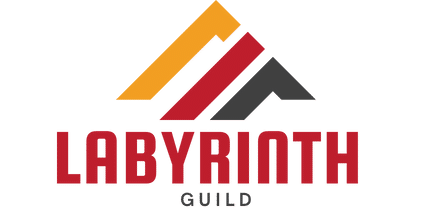In the current era of rapid urbanization and increasing environmental concerns, the call for sustainable and resilient urban development is louder than ever. Urban centers are required to adapt and respond to the pressures of climate change, societal shifts, and technological advancements. The real estate sector, as a significant part of urban infrastructure, plays a critical role in these conversations. The challenge lies in integrating sustainability and resilience in urban real estate projects. Let’s explore key considerations in achieving this goal.
Aligning Urban Planning and Design with Sustainability Principles
Sustainability is a multifaceted concept that needs to be integrated into every stage of real estate development, from urban planning to design execution. It implies that urban projects should not just aim for short term gains but consider their long-term impact on the environment, society, and economy.
Also read : What are the best practices for integrating renewable energy systems into new real estate developments?
Urban planning has a profound influence on the sustainability of a city. It shapes how communities use resources and interact with their surroundings. The search for sustainable solutions can readily be found in the pages of Google Scholar, where academics and practitioners alike have dedicated extensive research to this topic.
On the other hand, the design phase of real estate projects should focus on maximizing energy efficiency, minimizing waste, and promoting a healthy and productive environment for occupants. Green architectural techniques, such as passive solar design and use of renewable materials, can contribute significantly to these goals.
Also read : How can technology be used to streamline the real estate development approval process?
Incorporating Climate Resilience in Real Estate Projects
Global climate change poses grave implications to cities worldwide. As such, urban real estate projects should take into account their inherent vulnerability to climatic events and aim to build resilience against these occurrences.
For instance, real estate projects should consider their location’s susceptibility to climate risks – floods, earthquakes, heatwaves, etc. Building designs should then be made to withstand these risks. Infrastructure resilience can be enhanced through various methods, such as designing flood-resistant buildings in flood-prone areas or incorporating shading devices and green spaces to counteract urban heat island effects.
Beyond the physical structures, real estate projects should pay particular attention to the resilience of the community. This includes creating structures that support social cohesion and providing necessary amenities that would aid the community during times of crises.
Green Building and Energy Efficiency
The energy consumption of buildings contributes significantly to global greenhouse gas emissions. Hence, promoting energy-efficient green buildings is an essential step towards sustainable and resilient urban real estate.
Green buildings are structures designed, constructed, and operated to minimize their environmental impact. They often incorporate energy-efficient features, such as high-performance windows and insulation, energy-efficient lighting and appliances, and renewable energy systems like solar panels and wind turbines.
There is an increasing trend in the real estate sector towards certification systems such as LEED (Leadership in Energy and Environmental Design), which provide a framework for designing and constructing green buildings. Such certifications not only ensure the building’s sustainability and efficiency but also enhance the value of the property in the real estate market.
Prioritizing Social Sustainability and Affordable Housing
While environmental sustainability garners much of the spotlight, social sustainability is equally important. It involves creating inclusive, cohesive, and equitable communities. In the context of urban real estate, this translates to affordable housing and equitable access to resources and amenities.
Affordable housing is foundational to social sustainability. Investing in affordable housing helps reduce homelessness and housing stress and contributes to healthier, happier communities. Furthermore, it helps promote economic sustainability by providing low-income earners with opportunities to live and work in urban areas.
Leveraging Technology for Sustainable and Resilient Urban Development
Technology plays a pivotal role in sustainable and resilient real estate development. Innovations in architecture, design, construction, and energy sectors can enable the transition towards greener and more resilient cities.
Data analytics, for instance, can provide insightful information for urban planning and real estate development. It can help identify trends, patterns, and areas for improvement. Similarly, digital tools and platforms can aid in designing more energy-efficient buildings and tracking their performance.
The era of smart cities is upon us, with the integration of digital and telecommunication technologies into city infrastructure and services. Similarly, real estate projects need to embrace smart technologies to enhance their sustainability and resilience. From smart meters that monitor energy use to smart grids that manage energy distribution, technology can greatly enhance urban resilience and sustainability.
Utilizing Green Infrastructure for Resilient Cities
Green infrastructure, an approach that highlights the importance of the natural environment in decisions about land use planning, plays a significant role in creating resilient cities. Incorporating green infrastructure into real estate development can help balance urbanization with nature, promoting a healthier ecosystem while also responding to the challenges posed by climate change.
Measures could include the preservation and restoration of ecological features (like forests, rivers, and wetlands), the creation of park networks, and the use of vegetation and green spaces for stormwater management. These not only contribute to climate resilience but also provide recreational spaces, enhance biodiversity, and improve air and water quality.
Vegetated roofs and walls, for instance, help regulate building temperature, reducing the need for heating and cooling and thus lowering energy consumption. Rain gardens and permeable pavements can aid in managing stormwater, reducing the risk of floods.
Moreover, green infrastructure also has social benefits. By providing spaces for recreation and improving the visual appeal of neighborhoods, it can enhance the quality of life for residents and promote a sense of community.
Conclusion: Towards Sustainable and Resilient Urban Real Estate Development
In a world increasingly marked by climate change and urbanization, the importance of sustainable and resilient urban real estate development cannot be overstated. It is not merely an environmental or economic concern, but also a social one. It calls for a balanced approach that considers all facets of sustainability – environmental, economic, and social.
The integration of sustainable urban planning, green building, and energy efficiency is crucial for long-term resilience. The design and construction of real estate projects must prioritize sustainability, not just in terms of environmental impact, but also in terms of community resilience and social equity. Affordable housing, for instance, is a key component of social sustainability, ensuring that everyone, regardless of income, has access to safe and affordable homes.
The use of green infrastructure and technology can further enhance the sustainability and resilience of urban development. They provide innovative solutions to mitigate climate vulnerabilities and optimize resource use.
Lastly, it is important to remember that sustainable and resilient urban real estate development is not a one-size-fits-all solution. Each city, each neighborhood, and each building has its own unique context and challenges. Therefore, localized strategies and continuous adaptation are required.
By keeping these critical considerations in mind, urban planners, real estate developers, and policymakers can create urban environments that are not only fit for the present but are also ready for the future. The sustainable city of the future is not just a vision; with careful planning and implementation, it can be our reality.











